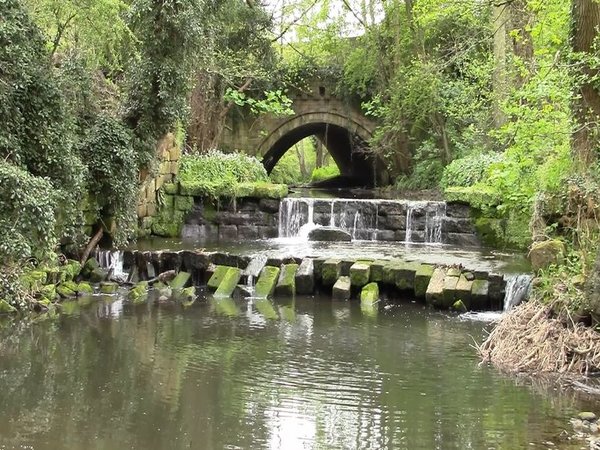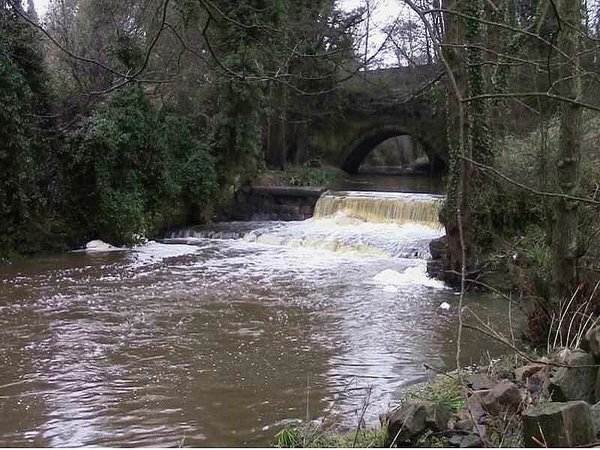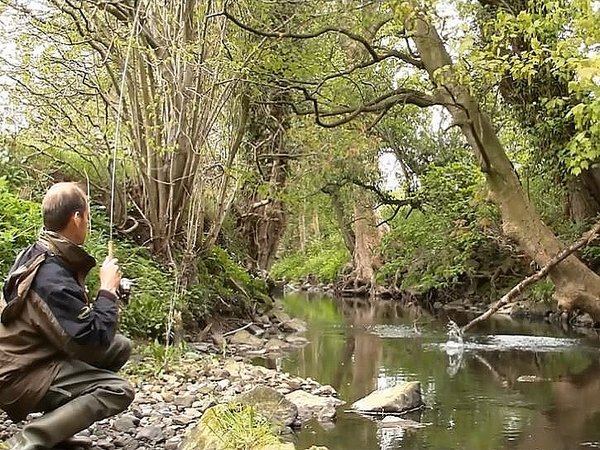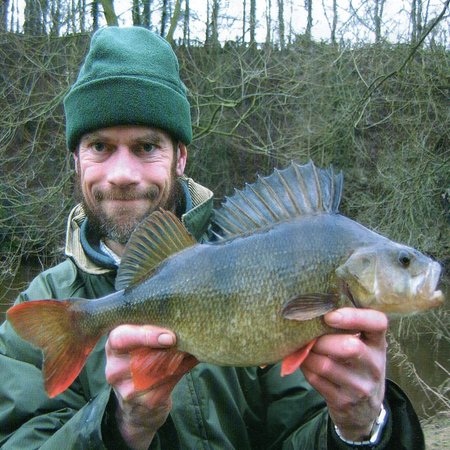Floods change rivers. Gravels shift, trees are uprooted and sections of the bank collapse. A new deflection of the current might scour a deep pool from shallows, while elsewhere a lost deflection could result in a gradual reduction of depth. Directly or indirectly, the dynamics of fish populations may also alter.
Such changes are most evident, and occur most rapidly, in the swift-flowing upper reaches of rivers. For much of my life I have lived within a mile of a rocky Yorkshire beck, home to wild brown trout, bullheads, stone loach and minnows. In places the beck is little different to the watercourse I knew 50 years ago, but in others it is unrecognizable.
One evening after school in June 1969, I followed a path through the village church yard and across a field to reach a place where the water spilled over rocks into a narrow, but rather deep pool. On the far side the beck had carved a wall of exposed earth, overhung by a thatch of grass and some straggly hawthorns.
A juicy free-lined worm was flicked to the head of the pool. Coils of 10lb nylon settled on the surface and gradually began to sink – in those days I had a take-no-prisoners attitude to angling, largely inspired by the writings of Dick Walker. Nothing happened to suggest the bait had been devoured, but when I attempted to retrieve, a fish was on. After much thrashing and splashing, the biggest brown trout I had ever seen was dragged onto the bank. It was sufficiently impressive to earn a mention on the junior page of one of the weeklies.

Since then, the floods have done their work. There is nothing left to even hint that the scene of this triumph ever existed. The pool has been replaced by rocky shallows and the wall of exposed earth has long since been washed away.
It is a scenario that is undoubtedly being repeated on rivers and streams across the country, and which will probably be accelerated as a result of the huge floods of recent winters. There has been much discussion in forums and in the angling press about fry, and perhaps even adult fish, being swept away by surging water and lost forever. But there are other ways in which floods might impact on fish stocks…

The same weir during a moderate flood
Consider Himalayan balsam, that sweet-smelling, alien flower with the exploding seed heads, which has spread like wildfire along river banks since the 1960s. It is an invasive plant which shades out native flora, and thereafter de-stabilizes the bank due to its shallow root structure.
Unstable banks mean that when the river floods, more suspended sediment finds its way into the flow, a percentage of which will settle on the bottom as the level drops. This could potentially smother spawning gravels, and restrict the growth of water plants by blocking sunlight. Add to this the predation of spawn by alien species such as signal crayfish and there is a possibility of considerably reduced recruitment, while any fry which successfully hatch are left vulnerable because they lack the cover afforded by water plants. Could this be a contributory factor in the apparent decline of species such as roach and dace in some rivers?
All this is speculation. I am not a scientist and have no evidence of the extent to which such things are damaging fish populations (if indeed they are causing any damage at all). Regardless, I think it is time for anglers to look rationally and intelligently at the problems which might beset fisheries, instead of disengaging their brains and launching futile tirades against otters and cormorants.
Earlier this year I returned to one of my favourite haunts, a small Scottish river populated by big grayling, and was interested to discover what impact the record-breaking floods of winter 2015/16 had made. Evidence of the river bursting its banks was clear to see in the surrounding, flat fields. There were tide lines of debris consisting of stalks, sticks, branches and boughs, littered with plastic bottles, drink cans, occasional punctured footballs and traffic cones, sometimes hundreds of meters beyond the river’s normal limits.
While the river had retreated to its usual course on that February day, it was still carrying a little extra water and a muddy stain. Some of the favoured swims had been radically altered by the power and volume of water that had passed through.
At the head of one such swim, known as The School Pool due to its proximity to the local village school, a gravel bank had expanded significantly, forcing the river into a narrow, rushing channel under the far bank. As a result, the steady, walking-pace flow which once characterised the pool was no more. Instead, a churning plume of current surged down the swim, before sweeping round in a rather turbulent backwash. From a grayling angler’s perspective, the pool looked considerably less appealing. However, the grayling themselves obviously had different ideas, for one of the friends with whom I travelled managed to extract several nice fish.
Further upstream is a long, steady glide, which I christened The Three-pounder Swim because…well, you can probably guess! In this instance the changes caused by the floods had been relatively minor. The run-in had once featured a couple of small gravel islands with tussocks of sedge, but while these had been washed away, the nature of the swim was otherwise little altered.
On the second morning of our two day stay, the swim came good. A gap between willows at the top of the glide provided a vantage point from which a waggler could be flicked across a deep slack towards the crease on the edge of the main flow, which was still pushing through at quite a pace. After catapulting a pouchful of maggots, I baited with two grubs, made a low sideways cast (avoiding the overhanging branches) and watched the float’s black tip dance down the current. It did not travel far before flashing under. Into a fish first cast, and it felt like a good one.

Action on a Yorkshire beck
For several minutes the slack rocked as a big grayling swirled and plunged repeatedly, an impressive, speckled fan of a dorsal fin sometimes cleaving the surface. Looking down into the landing net at a bruiser of a fish, steel grey and silver with tints of lilac, crimson and gold, I knew that the coveted 3lb mark had been exceeded. So it proved, by an ounce. What a start to the day!
It would have been 20 minutes or more before I was ready to make the second cast. You know how it is…photographs, phone calls and a lap of honour along the bank. That second cast produced an identical result, another grayling of 3lb 1oz (though definitely not the same fish). After that, things could only go downhill, although it hardly mattered.
The return walk at the conclusion of fishing provided further evidence of the power of the floods. It was clear that there had been forceful flows at some distance from the usual course of the river – a jumble of rocks deposited in a field corner and a deep trench near a gate, probably where rushing water had expanded the rut caused by a tractor’s wheel. As river anglers, I suspect we will have to accept that in the future, favourite swims will increasingly become temporary phenomena as features are dislodged and shifted, or destroyed, by regular large floods.

2005: 3lb 3oz from Boston Spa
*Videos of Dave fishing on his local Yorkshire beck, and grayling fishing on a Scottish river, can be viewed by clicking the following links:-
https://www.youtube.com/watch?v=1jzTeT7p_vw
https://www.youtube.com/watch?v=RoSnv4IvUuo










